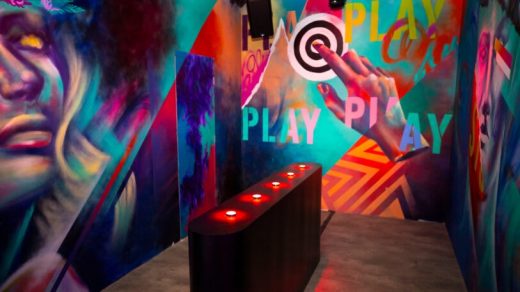Inside New York City’s 9,000-square-foot exhibit about weed
“You have reached enlightenment,” a friendly voice tells me as I reach the top of the elevator. To my left is a floral mural punctuated by the word “High” in cursive, glowing pink at the center. To my right is a lush green wall with a sign that spells out “The Stone Age.”
This isn’t an exhibit about cavemen. It’s an exhibit about weed.
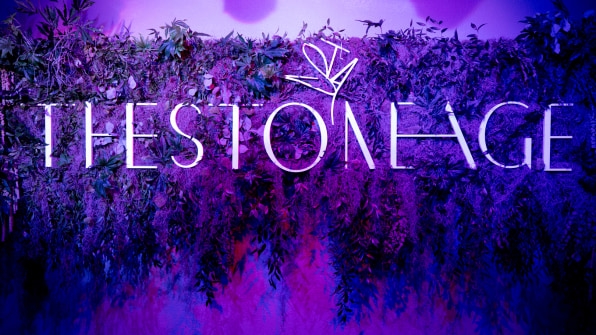
It only seems fitting for New York City to get its own exhibition about marijuana. As the plant has been legalized for recreational use over the past few years (Washington and Colorado came first in 2012; New York joined the ranks in March of this year), a slew of marijuana-themed museums and immersive experiences have been cropping up throughout the country, from the Museum of Weed in Los Angeles to the upcoming Cannabition in Las Vegas.
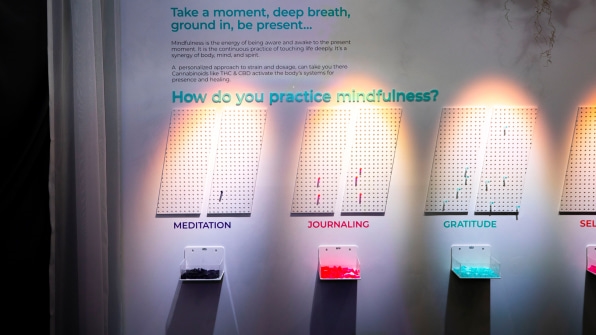
Spanning 9,000 square feet in a Chelsea building, the New York City venture opened last week. It’s a fun exhibition with a serious mission to destigmatize cannabis and explore the plant’s complicated relationship with mass incarceration, social justice, the opioid epidemic, and sexual wellness. Featuring the works of eight street artists, some of whom have personally been impacted by the criminalization of cannabis, the Stone Age takes visitors on a journey through the senses while bringing awareness to a plant that has been misunderstood and used as a discrimination tool for over a century.
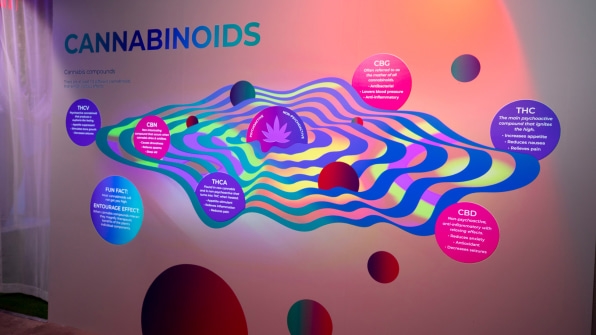
For the record, this isn’t an experience centered around consuming cannabis (neither medical nor recreational cannabis is distributed on the premises, although the website’s FAQ section says you are encouraged to do whatever you please to “enhance” your experience beforehand). This is a show about awareness. “For us, cannabis is so much more than just getting high,” says Sasha Perelman, who organized the exhibition alongside Elizabeth Santana. Together, Perelman and Santana have produced hundreds of events for brands in cannabis, wellness, and other industries. “There are many conversations that cannabis becomes the catalyst for that we’re really excited to have in this space and promote a conversation around,” says Perelman.

Said conversation begins with a four-room display about sexual wellness. The first room portrays a feeling of anticipation through a large pendulum swinging above a forest of vertical matches, almost grazing the surface. The last room features an ethereal LED sculpture that is pulsing with light. Inside it is an evocative red core. Designed by Brooklyn artist and designer Jason Krugman, the light is a sculptural interpretation of what an orgasm looks like. (Upon reflection, maybe it should’ve been designed by a woman.)
This part of the exhibit is hinting at the relationship between cannabis and pleasure. “Cannabis helps release dopamine, which not only impacts our receptors and our nerve pathways, but it also enhances our sense of touch or smell,” says Perelman, noting it can be particularly helpful for people who struggle being comfortable physically but also mentally. Perhaps this idea could have been made more visible in the show—there’s only one sign about the relationship between sexual wellness and the plant—but maybe the point is to leave some things to the imagination.

The exhibition then goes on to portray the long-standing correlation between cannabis and creativity (a nifty DJ booth lets you compose your own beat), before taking on a more somber tone. In a white corner of the space, a “tornado of prescriptions,” as Santana calls it, twists up from the ground. “The addiction and the epidemic did not start on the street, it started behind the desk with somebody writing a prescription,” she says.
As of 2016, 2.5 million Americans struggle with opioid addiction and more than 100 people in the U.S. die from drug overdoses every day. The exhibition suggests that there is a more natural way to heal. “The benefits of cannabis as a natural medicine to help with pain can not only help with opioid withdrawal but hopefully alleviate your need to try opioids,” says Perelman. According to a 2019 study published in the American Journal of Psychiatry, CBD oil significantly reduced cravings and anxiety in patients who were detoxing from opioid drugs, which could make detox more tolerable and also decrease the chance of relapse.

Much of the exhibition is focused on the multifaceted potential of cannabis, but the drug also has a racist history. A timeline shows the way anti-marijuana campaigns have been used to demonize the plant since the 1937 Marihuana Tax Act—specifically targeting minorities and Black Americans. Harry Anslinger, the man who declared the war on drugs, is referenced below the timeline with a revolting quote: “Reefer makes darkies think they’re as good as white men.”
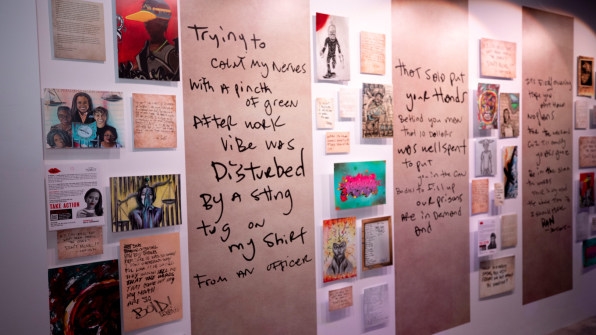
According to a 2020 report from the American Civil Liberties Union, Black people in the U.S. are almost four times more likely to be arrested for marijuana possession than white people, even though both groups use marijuana at similar rates. In 2018, over 450,000 individuals were serving time for a drug charge—two-thirds of those were people of color. And that number is particularly staggering considering the use of recreational cannabis is now legal in 18 states. At Stone Age, the team worked with the Last Prisoner Project—a nonprofit that advocates for these nonviolent prisoners to be freed—and commissioned art from individuals who have been incarcerated or are currently. (The originals are available for purchase in the gift shop; all proceeds will go back into the artists’ hands).
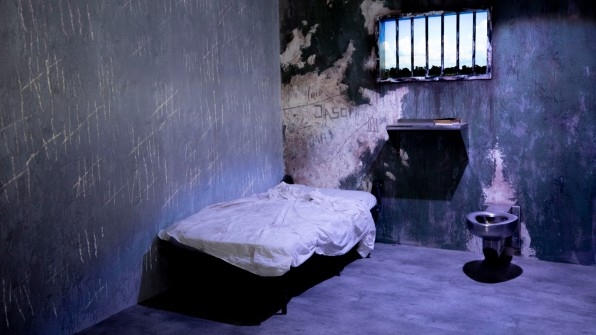
This installation culminates in a jail cell. Walking past a mural painted by an artist who was previously incarcerated (she chose to stay anonymous), visitors enter a dreary grey cell with a flimsy bed in the corner and a poignant projection of hundreds of tally marks slowly filling the wall. Depending on how the crime is classified, marijuana-related crime convictions range from five days to 15 years. “Twenty-four hours a day of no freedom,” says Santana.
At its core, Stone Age uses cannabis as a vehicle to explore larger issues. “Those are very much conversations that make a lot of people uncomfortable,” says Perelman. “We want to create a space where, in a fun, entertaining, and thought-provoking way, we can elicit those types of dialogues, and start to create a new narrative and create more progress.”
The Stone Age is scheduled to run for a limited time only (the exact end date is still TBD). Tickets start at $45. A portion of sales will be donated to the Last Prisoner Project.
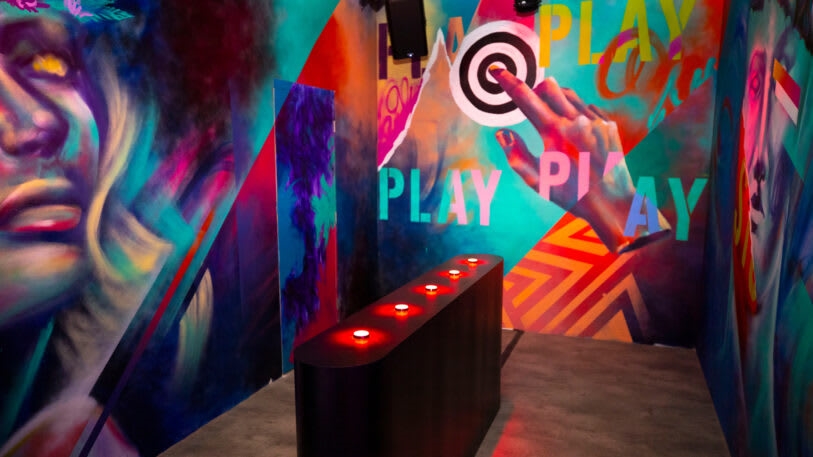
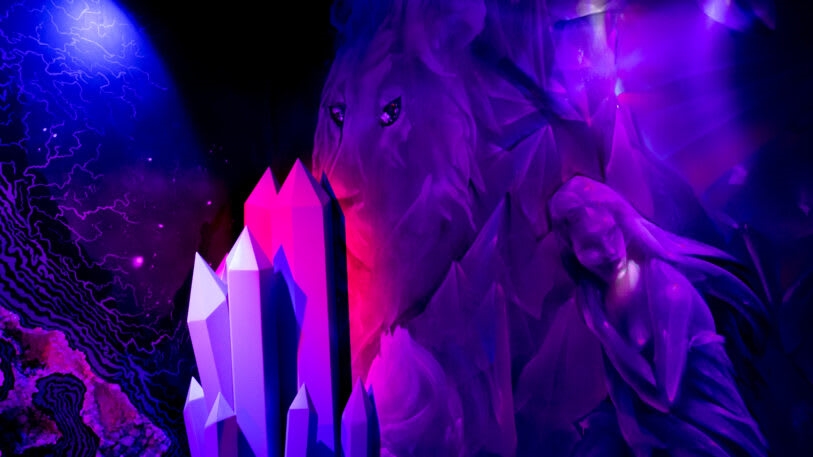
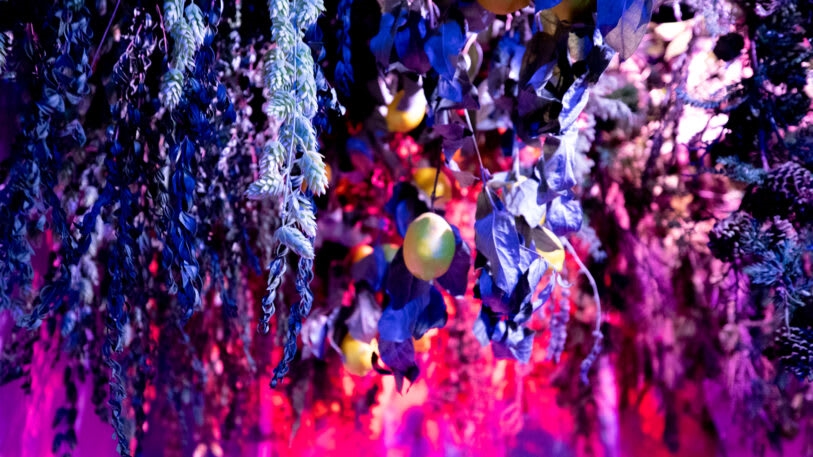
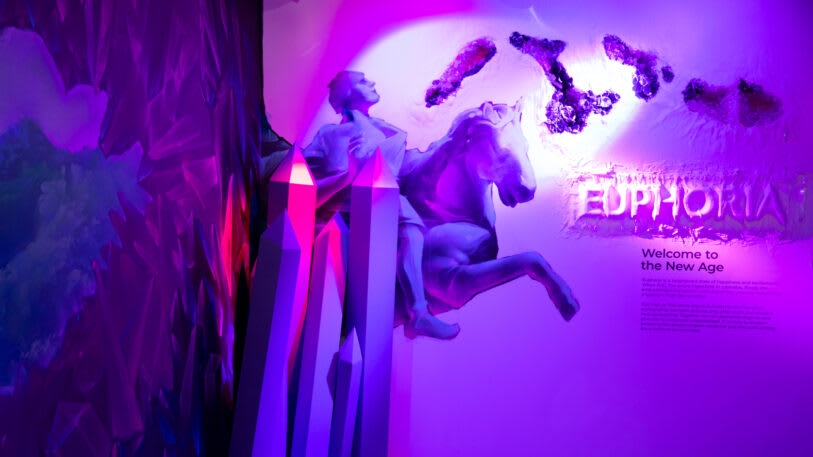
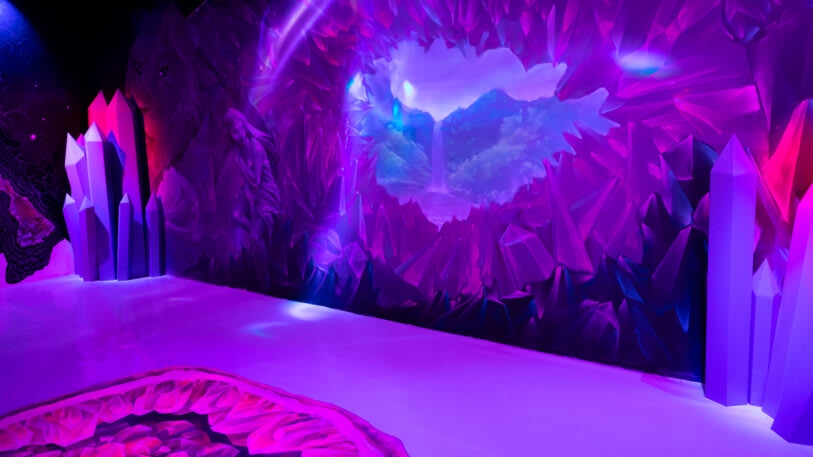
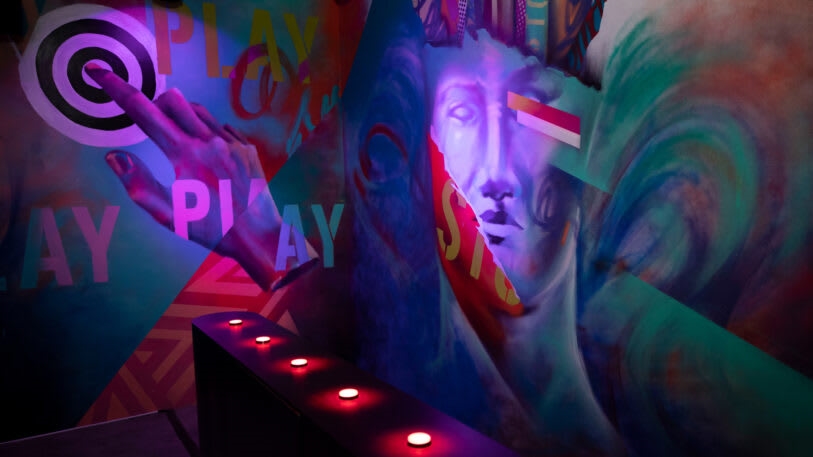

Fast Company , Read Full Story
(37)

